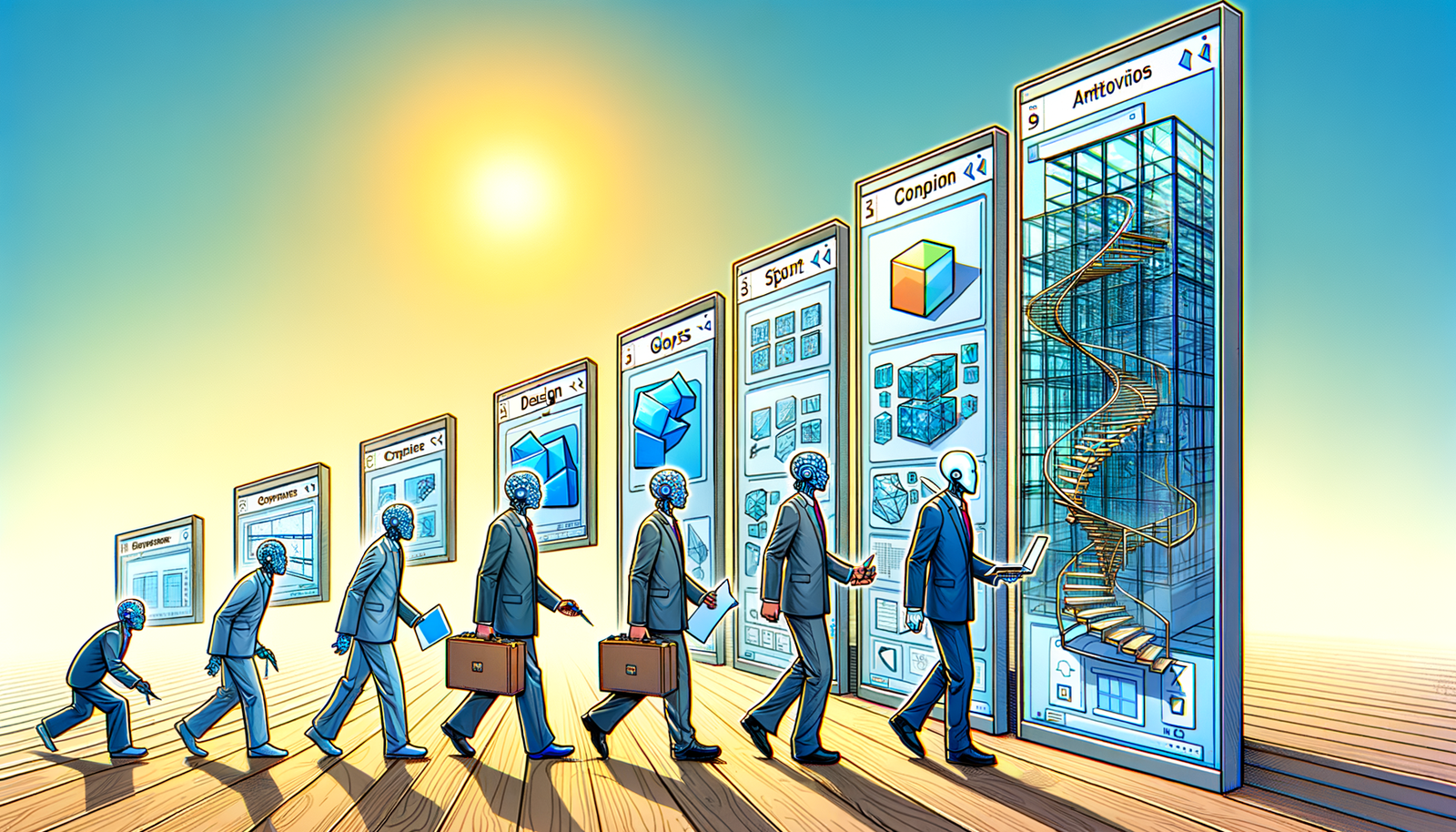Your Cart is Empty
Customer Testimonials
-
"Great customer service. The folks at Novedge were super helpful in navigating a somewhat complicated order including software upgrades and serial numbers in various stages of inactivity. They were friendly and helpful throughout the process.."
Ruben Ruckmark
"Quick & very helpful. We have been using Novedge for years and are very happy with their quick service when we need to make a purchase and excellent support resolving any issues."
Will Woodson
"Scott is the best. He reminds me about subscriptions dates, guides me in the correct direction for updates. He always responds promptly to me. He is literally the reason I continue to work with Novedge and will do so in the future."
Edward Mchugh
"Calvin Lok is “the man”. After my purchase of Sketchup 2021, he called me and provided step-by-step instructions to ease me through difficulties I was having with the setup of my new software."
Mike Borzage
Design Software History: The Evolution of Design Software in Glass and Façade Engineering: From CAD to AI-Driven Innovations
October 18, 2024 4 min read


Introduction
Glass and façade engineering have become pivotal elements in modern architecture, defining the aesthetic and functional essence of contemporary buildings. The evolution of skyscrapers and innovative structures has been significantly influenced by advances in these fields. Over the decades, the integration of glass has transformed from mere windows to integral components that contribute to energy efficiency, structural integrity, and dynamic design. The advent of specialized software tools has played a crucial role in this transformation, enabling engineers and architects to push the boundaries of what is possible. From enhancing performance and sustainability to achieving breathtaking aesthetics, innovation in software has been the cornerstone of modern glass and façade engineering.
Historical Context and Early Innovations
Before the rise of advanced software, façade design relied heavily on traditional engineering methods and manual drafting techniques. Architects and engineers used paper-based drawings and physical models to visualize and plan structures. The introduction of Computer-Aided Design (CAD) in the latter half of the 20th century marked a significant shift. Tools like AutoCAD allowed for more precise and efficient drafting, reducing the time and errors associated with manual methods. However, early CAD applications were primarily 2D, limiting their ability to fully represent complex façade geometries.
The late 20th century witnessed key milestones with the development of software specifically tailored for glass and façade engineering. Companies like Autodesk and Bentley Systems emerged as pioneers in this arena. Autodesk's introduction of 3D modeling capabilities enabled more accurate representations of architectural designs. Bentley Systems offered MicroStation, a platform that provided robust tools for infrastructure and building projects. These innovations laid the groundwork for more sophisticated applications, allowing architects to experiment with complex shapes and materials, thus expanding the horizons of façade design.
Key Innovations in Design and Modeling Software
The turn of the century brought about feature-rich software tools that transformed the industry. One notable example is Rhinoceros (Rhino), developed by Robert McNeel & Associates. Rhino's integration with Grasshopper, a visual programming language plugin, revolutionized parametric design. This combination allowed architects and engineers to create complex, organic shapes through algorithmic processes, enabling designs that were previously unattainable. The use of parametric modeling facilitated the exploration of numerous design iterations efficiently.
Structural analysis saw significant advancements with software like SAP2000, developed by Computers and Structures, Inc. SAP2000 provided comprehensive tools for structural engineers to analyze and design complex structures, including those with intricate glass façades. Moreover, the development of specialized tools for glass performance simulations became crucial. Software such as LBNL Window, developed by the Lawrence Berkeley National Laboratory, allowed for detailed analysis of thermal performance and light transmission. GUARDIAN, another key player, offered solutions for assessing the structural integrity of glass components. These tools addressed critical factors such as energy efficiency, safety, and comfort, enabling engineers to optimize façade designs for various performance criteria.
Integration of Advanced Technologies
The integration of Building Information Modeling (BIM) technology marked a significant evolution in glass and façade design. Software like Autodesk Revit facilitated collaboration among architects, engineers, and construction professionals. BIM allowed for the creation of comprehensive digital representations of buildings, encompassing physical and functional characteristics. This holistic approach improved project management and efficiency, reducing conflicts and errors during the construction phase. The ability to share and update models in real-time enhanced communication and coordination among all stakeholders involved.
Another advancement was the incorporation of computational fluid dynamics (CFD) into façade modeling. Assessing wind loads, thermal comfort, and airflow around buildings became possible with software like ANSYS. These tools enabled engineers to simulate environmental interactions, ensuring that designs could withstand various climatic conditions. The integration of CFD in design processes was particularly important for high-rise buildings and structures with unconventional shapes. The combination of BIM and CFD technologies allowed for more informed decision-making, leading to safer and more efficient designs.
Future Trends and the Role of Sustainability
Looking ahead, emerging trends in glass and façade engineering software are centered around sustainability and energy efficiency. There is a growing focus on developing tools that facilitate the use of sustainable materials and optimize building performance. The adoption of generative design and machine learning algorithms is becoming more prevalent. These technologies enable the exploration of vast design possibilities, automatically generating solutions that meet predefined criteria for performance and aesthetics. Software developers are creating applications that can predict and enhance the environmental impact of building designs.
The integration of artificial intelligence (AI)adaptive façades that respond to environmental changes, optimizing energy use and occupant comfort. Future software might include capabilities for responsive design, allowing façades to adjust light transmission, insulation, or ventilation dynamically. These advancements could revolutionize how buildings interact with their surroundings, enhancing both functionality and environmental performance.
Conclusion
Software innovations have undeniably played a critical role in advancing glass and façade engineering. From the early days of CAD to the sophisticated tools available today, technology has enabled architects and engineers to realize complex designs that were once inconceivable. The continuous development of specialized software has enhanced not only the aesthetic qualities of modern structures but also their performance and sustainability. The challenges of the future, particularly regarding environmental concerns, underscore the need for ongoing innovation. As technology integrates further into architectural practices, it will shape the architectural landscapes of tomorrow, fostering designs that are beautiful, functional, and environmentally responsible.
Also in Design News

Rhino 3D Tip: Optimizing Workflow Efficiency in Rhino 3D for Enhanced Design Outcomes
October 25, 2025 3 min read
Read More
Cinema 4D Tip: Creating Dynamic Animated Infographics in Cinema 4D
October 25, 2025 2 min read
Read More
Revit Tip: Enhance Roof Design and Management in Revit with Key Strategies
October 25, 2025 2 min read
Read MoreSubscribe
Sign up to get the latest on sales, new releases and more …


